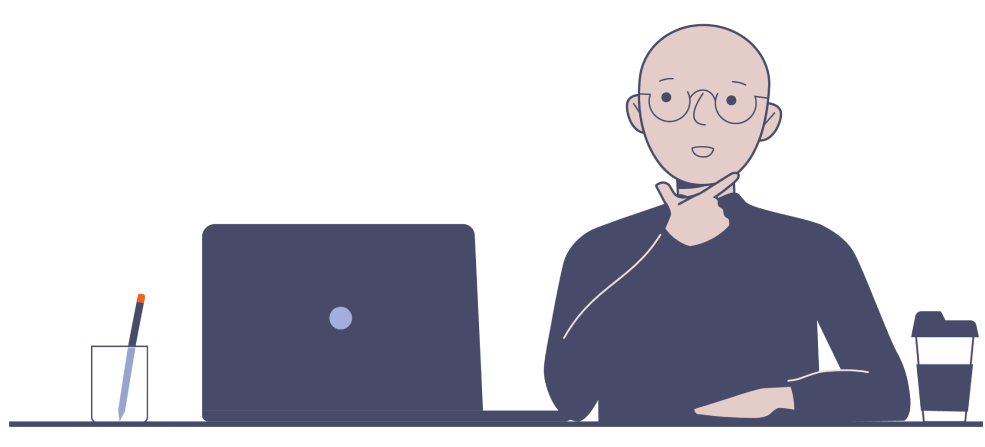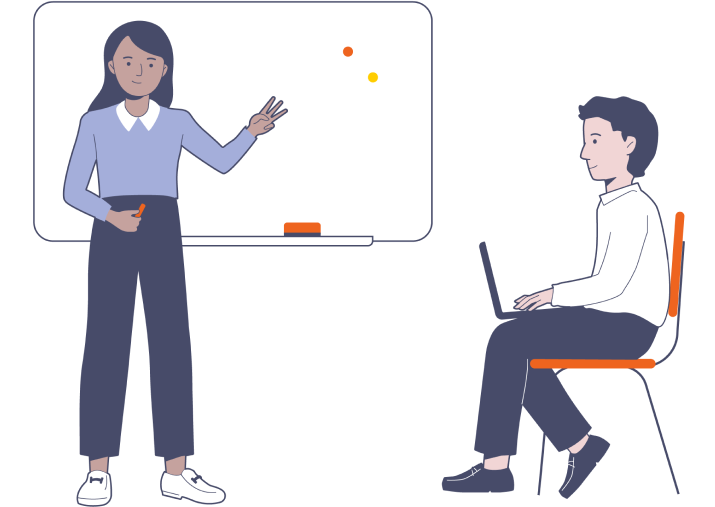
How Can We Make Coaching Work For Both Novices And Experts?
Resources|28th February 2021

Co-Founder & CEO — Steplab
How can we use Instructional Coaching to transform teacher quality when we don't agree about what it is and who it's for? This series is about redefining what we talk about when we talk about Instructional Coaching.
This is the second in a blog series:
- 1.
- 2.Part 2 How can we tailor our instructional coaching approach for both novices and experts?
- 3.
- 4.
Part 2: How can we tailor our instructional coaching approach for both novices and experts?
In Part 1, we explored the dilemma faced by Kate, a newly-appointed T&L lead. Kate believes in the power of instructional coaching to transform teaching but after digging into the literature, she's confused: there are (at least) three conceptions of what instructional coaching means. Each of these suggest widely varied approaches, suit different groups of staff, and are underpinned by different philosophies. Kate doesn't think that she'll be able to deliver a scalable and impactful instructional coaching programme without clearing this up.
- 1.Type-One Directive IC is about observing a teacher's lesson and selecting the 'move' that will have the biggest impact on the learning of their students. Coaches direct teachers to enact this move, following a set protocol including modelling and practice to ensure that the teacher achieves the change
- 2.Type-Two Non-Directive instructional coaching is about facilitating a teacher’s solution of problems within their classroom. Coaches should avoid 'telling' the teacher what to think or work on: the teacher's autonomy in solving these problems is paramount
- 3.Type-Three Blank-Canvas instructional coaching describes a set of features, like a one-to-one pairing of coach and teacher, high frequency observation and feedback cycles, and feedback focused on what the coach saw in the classroom. With the exception of deliberate practice, the model is agnostic about specific coaching mechanisms. A coach could utilise either Type-One or Type-Two within this framework.
Kate wants a unified instructional coaching model for every teacher in her school. She thinks that training her coaches in multiple models to suit the varied experience levels of her teachers isn’t a workable solution.
Finding our way to a unified coaching model
All three instructional coaching types presented in Part 1 are problematic: they are either invariant to teacher expertise (Directive vs Non-Directive) or don’t provide enough guidance about how highly-effective coaching should look (Blank-Canvas instructional coaching).
Through understanding the issues with each, Kate hopes to develop a coaching model that is responsive to the varied needs of teachers in her school.
Blank-Canvas instructional coaching
Sam Sims and Harry Fletcher-Wood (2020) argue that any method of professional development defined by surface features is missing the point about what makes it effective.
They argue that it is important to distinguish the "‘active ingredients’ of professional development (the 'stuff' we do that actually improves teaching quality) from causally redundant components" (Sims & Fletcher-Wood, 2020). I’ll refer to active ingredients as mechanisms of learning from now on.
Is it the fact that the coach and teacher are working together one-on-one (a surface feature) or the fact that they use deliberate practice to build habits (a mechanism) that explains the impact coaching has on teacher quality? Sims and Fletcher-Wood argue that mechanisms matter more in explaining what makes for impactful teacher development.
The worry with using a blank-canvas definition of instructional coaching is that this alone isn’t enough to ensure that teachers learn. This isn't to say that Kraft and Blazar's evidence for the impact of coaching isn't valid: it's just that there are likely more active mechanisms underpinning it. Kate realises that coaching can meet the criteria set by Kraft and Blazar (2018) and be ineffective. There's nothing* inside* the model that tells coaches how to give excellent feedback.
Kate realises that to come up with the perfect coaching model, she needs to look beyond surface-features and into the mechanisms that 'cause' teacher learning.
Immobile Mechanisms
Kate looks next at Bambrick-Santoyo's instructional coaching model (Type-One). She notices that unlike a blank-canvas definition, the model is centred around mechanism:
- 1.See it: Modelling
- 2.Name It: Setting precise learning goals
- 3.Do It: Building habits using deliberate practice; giving feedback on performance; implementation planning.
Kate has seen this model used to great effect with some teachers in her school, but she's had some negative feedback from more experienced staff. What’s the reason that certain learning mechanisms are more suitable for novices or more expert learners? When she wants to answer the question of when to use or avoid a scaffolded approach to learning with her students, she turns to Cognitive Load Theory.
Kate wonders if ideas about cognitive load can help her to decide on appropriate coaching mechanisms for her staff.
Coaching and Cognitive Load Theory
"Prima facie, any instructional design that flouts or merely ignores working memory limitations inevitably is deficient" (Merrienboer & Paas, 1998).
Cognitive load theory (CLT) is a recognition of the severely limited capacity of the working memory (WM), and of the importance of the long-term memory (LTM) to augment the limited capacity of WM. Novice learners have limited LTM resources that can support their WM and so are overloaded easily; experts have wide-ranging LTM resources and so can face more complex learning problems before cognitive overload is reached.
As Kate digs into the research on CLT, she starts to see how this might help her think about how to match coaching mechanisms to teachers.
"How ... material is dealt with should depend on learners' level of expertise. Redundant material should be eliminated for expert learners but the same material might need to be integrated for novice learners. Material that is redundant for more experienced learners may be essential for less experienced learners." (Ibid)
The Redundancy Effect
A directive approach, with many coaching mechanisms designed to support a teacher’s learning, might be essential for less experienced teachers, but redundant for those with more experience.
By presenting experts with redundant information, we actually increase their cognitive load because they already have the LTM resources they need. By requiring them to attend to redundant information (e.g., modelling a technique when they already have a clear mental model), we distract them from using the knowledge they already have at their disposal to solve the problem (Persky & Robinson, 2017). On the other hand, novices with no LTM resources need coaches to supply this. Essential mechanisms for mitigating cognitive load for one teacher may cause this for another.
Kate also thinks that forcing more expert teachers through steps that are irrelevant to their learning - and directing them in areas where they already know the best path to take - can be demotivating and frustrating. On the other hand, as a relative expert herself she is clear that she often favours being coached in a directive way.
Kate’s coaching model must adapt to teacher expertise level. Sticking rigidly to a set of mechanisms (e.g., a set coaching protocol) is likely to increase cognitive load - and decrease motivation - unless they are responsive to the needs of the learner.
Constructivism or Cognitive Load Theory?
Kate is learning that the perfect model of instructional coaching must focus on mechanism and that mechanism choice should match teacher expertise. She is still confused about Non-Directive instructional coaching and its belief that the coach "facilitates the self-directed learning of the coachee" (Knight, J. 2007).
By ignoring her teacher’s desire to direct their own learning, does she risk turning teachers off? On the other hand, by prioritising teachers solving their own classroom problems does she risk teachers selecting the wrong things to work on or facing cognitive overload and not learning at all?
As part of her own teacher training (many years earlier!), Kate remembers being taught that students learn best when a constructivist approach is adopted.
In constructivist theory, learners should be presented with complex problems where the learner should "...interpret and solve the problem or complete the project", working in an authentic space where the goal is to "...learn about the field by thinking like a member of that practice community" (Jonassen, 1999).
Kate thinks that prioritising a non-directive problem-solving approach to instructional coaching could be underpinned by a similar philosophy. In other words, a belief that teachers learn best when taught like an expert.
Kate has the following concerns with this view:
- 1.After digging into Cognitive Load Theory, Kate has learnt that 'problem-based learning' approaches are "exceptionally expensive in terms of working memory capacity" (Merrienboer & Kirschner, 2003). If these approaches have been found to be problematic for (most) students, why are we still using them to underpin our approach to teacher learning?
- 2.Kate wonders if there is an autonomy-bias about adult learning stating either a) that treating adults as experts is how we respect their autonomy, or b) that because teachers are self-directed in their classrooms, we should treat them as such in their learning. She doesn’t buy this
- 3.She finds this view paradoxical: by training teachers in a way that assumes that they are expert, Cognitive Load Theory suggests that we are likely to be preventing them moving towards expertise.
It’s equally important to recognise that for experts, cognitive load theory suggests that problem-based learning can be the right way to avoid overloading the working memory. For someone that already has the LTM resources they need to solve a classroom problem, problem-based learning is an optimal approach.
Kate sees Cognitive Load Theory as underpinning the perfect coaching model: for experts, the coach should move towards a problem-based learning approach, while for everyone else, a more directive approach is required.
What has Kate learnt?
| Experise level | LTM resources | Coaching approach | Because... |
|---|---|---|---|
| Novice | Low | Directive Mechanism-Rich coaching approach |
Being Directive and Mechanism-Rich augments capacity of working memory and aids learning. Novies are motivated by rapid improvement |
| Expert | High | Problem-Based Mechanism-Light coaching approach |
Being Directive and Mechanism-Rich introduces redundant information. Adopting Non-Directive and Mechanism-Light approach allows experts to bring LTM resources to bear. Directive advice likely to conflict with existing LTM resources, decreasing motivation. |
Kate feels like she's closer to what she wants: a coaching model that can be applied to every teacher in her school, no matter what their experience level.
In Part 3, we’ll look at Kate’s attempt to apply her learning when coaching teachers. For an overview of the Steplab coaching model, check out our Beginner's Guide to Instructional Coaching.
References
Jonassen, D.H. (1999). Designing constructivist learning environments. In C.M. Reigeluth (Ed.), Instructional design theories and models: A new paradigm of instructional theory (Vol. II) (pp. 371-396). Mahwah, NJ: Lawrence Erlbaum.
Knight, J. Instructional Coaching: A partnership approach to improving instruction, Corwin Press, 2007
Kraft, M.A., Blazar, D., Hogan*, D. (2018). The effect of teaching coaching on instruction and achievement: A meta-analysis of the causal evidence. Review of Educational Research, 88(4), 547-588.
Merrienboer, J. G. Kirschner, P. (2003), 'Taking the Load off a Learner's Mind: Instructional Design for Complex Learning' Educational Psychologist · March 2003
Merrienboer, J. G. Paas, F. (1998) Educational Psychology Review · September 1998
Persky, A. M. Robinson, J.D (2017) American Journal of Pharmaceutical Education 2017; 81 (9) Article 6065.
Sims, S. Fletcher-Wood, H. (2020): Identifying the characteristics of effective teacher professional development: a critical review, School Effectiveness and School Improvement


